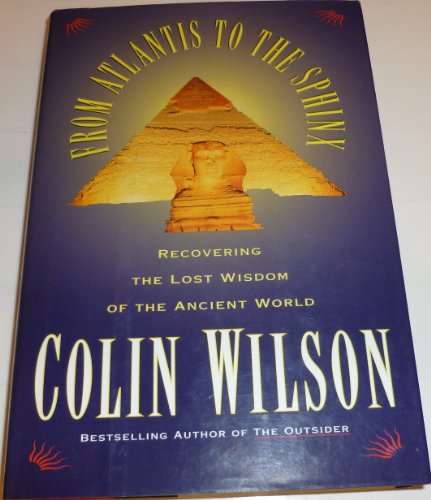Synopsis
Recent discoveries by Boston University geologist Robert Schoch of ancient water damage to the Sphinx have thrown the scientific world into tizzy, for they suggest that Egypt's legendary monument might be thousands of years older than previously believed. In his astonishing new bestseller exploring the implications of these explosive new findings, Colin Wilson takes us on a grand tour of the knowledge amassed by researchers over the centuries to ask questions about mysteries that have puzzled humanity since Plato: Was there an ancient civilization destroyed by some great catastrophe whose survivors built the Sphinx some 10,500 years before Christ? If so, who were these people who had developed a highly advanced culture and who traveled the world from China to the South Pole (then free of ice)? Were they really so unique in their thinking, as Wilson suggests, that, compared with modern man, they were as alien as Martians? Via paleontology and ritual cannibalism, Wilson's tour through time and space sets out to reconstruct that ancient knowledge. In a fascinating exploration of the remote depths of history, From Atlantis to the Sphinx takes us from the structure of the pyramids and the purpose of their tortuous interior shafts, to the prehistoric cities of America by way of ancient sea maps apparently showing the outlines of Antarctica before it was covered by ice.
Reviews
The author of numerous books with a New Age bent, including the best-selling The Outsider, Wilson here presents an unusual thesis: an ancient civilization, popularly called Atlantis, transmitted its advanced culture to other ancient civilizations before disappearing in a worldwide catastrophe. He examines antique maps, documents, archaeological records, and historical writings to "prove" that humankind is older than frequently supposed and that Atlanteans were the precursors of Egyptians, Aztecs, and Maya. Wilson also posits the existence of a collective human consciousness that permitted ancient peoples to work smoothly with other members of their groups. His most interesting (and believable) statement is that the Sphinx shows signs of water damage, an indication that it is much older than "experts" say. This volume, which bears comparison to John West's Serpent in the Sky (1979), presents its theories in a sober and readable manner. Suitable for public libraries.?Norman Malwitz, Queens Borough P.L., Jamaica, N.Y.
Copyright 1997 Reed Business Information, Inc.
"About this title" may belong to another edition of this title.
